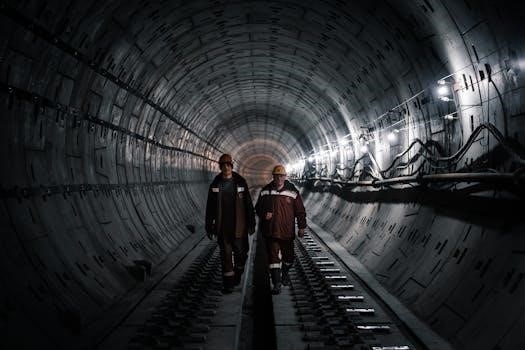
Focal path guiding is an innovative method used to enhance light transport simulations. It intelligently guides sample paths within a scene, focusing on regions with high contribution. This technique improves the efficiency of rendering by sampling important areas.
Definition of Focal Path Guiding
Focal path guiding, in the context of light transport simulation, refers to a sophisticated approach that intelligently directs the paths of light rays during rendering. Unlike traditional methods that may randomly sample paths, focal path guiding identifies and prioritizes areas of a scene that are likely to contribute significantly to the final image. These areas are often associated with focal points, which may arise from light passing through narrow gaps, lenses, or mirrors. The goal is to focus computational efforts on the most relevant paths, leading to more efficient and higher-quality image synthesis by concentrating sampling in areas with substantial light contribution. This targeted sampling reduces noise and improves convergence rates.
Role in Light Transport Simulation
In light transport simulation, focal path guiding plays a pivotal role in enhancing the efficiency and quality of rendered images. It addresses the challenge of accurately simulating how light interacts with complex scenes by strategically directing path samples. This approach is particularly important in scenarios where light is concentrated in specific areas, creating focal points. Traditional methods struggle with these situations, often requiring a large number of samples to converge to a noise-free image. By identifying and focusing on these focal areas, focal path guiding ensures that computational resources are allocated effectively. This results in a faster convergence rate, reduces noise, and ultimately produces higher quality images in a more efficient manner.

Core Concepts
Core concepts involve path tracing, importance sampling, and the crucial need for intelligent path guidance. These elements are fundamental in achieving efficient and high-quality light transport simulations.
Path Tracing and Importance Sampling
Path tracing is a Monte Carlo method used in light transport simulation, which traces paths of light through a scene, simulating how light interacts with objects. Importance sampling is critical to this process, as it concentrates sampling efforts in areas that contribute the most to the rendered image. This means more samples are taken in areas where light is strong, which leads to more efficient renderings. Good importance sampling strategies are decisive for the quality and robustness of photorealistic image synthesis. These paths are used to build and refine a guiding distribution for better light transport simulation.
The Need for Intelligent Path Guiding
Traditional path tracing, while accurate, can be inefficient when dealing with complex scenes, especially those with challenging light transport phenomena like caustics or reflections. This is where intelligent path guiding becomes crucial. Without effective guidance, many sampled paths contribute minimally to the final image, wasting computational resources. Intelligent path guiding aims to address this by focusing sampling efforts on the areas of the scene where light paths are likely to have a significant impact. This method is especially valuable in scenes with focal points, where light focuses through lenses, mirrors or other optical elements.
Methodology of Focal Path Guiding
The methodology involves identifying focal points, constructing guiding distributions, and using spatio-directional mixture models. This approach allows for more efficient sampling of light paths by focusing on important areas.
Identification of Focal Points
Focal points are crucial for efficient light transport simulation, and their identification is a primary step in focal path guiding. These points often emerge from specific scene configurations, such as when light passes through narrow gaps or when objects are viewed through lenses or mirrors. Detecting these areas of concentrated light is vital, as they contribute significantly to the final image. The method aims to identify these areas where light converges or has a high intensity. These focal points can also be thought of as regions of interest where light transport paths should be sampled more often, and the process of recognizing them accurately is key to the effectiveness of the entire focal path guiding methodology. This identification helps focus computational resources.
Guiding Distribution Construction
After identifying focal points, the next step in focal path guiding involves constructing a guiding distribution. This distribution is crucial for directing sample paths in a way that prioritizes the regions identified as focal points. The guiding distribution is built based on the importance of these areas, which are determined by their contribution to the final image. The goal of this distribution is to steer light paths towards regions that are likely to produce significant changes in the rendered image. It also ensures that paths are not wasted in less critical parts of the scene. The process involves creating a probability distribution that favors sampling in the vicinity of identified focal points, enabling efficient path tracing.
Spatio-Directional Mixture Models
Spatio-directional mixture models play a key role in focal path guiding by capturing the complex relationships between spatial locations and light directions. These models combine information about where focal points are located in space with the directions from which light is likely to contribute significantly. This combined approach enables the guiding system to accurately sample paths that are relevant to the rendering process. The mixture models are constructed to represent the probability of a light path going in a specific direction from a certain location, based on previously traced paths and discovered focal points. This allows for the creation of more informed and effective path sampling strategies, leading to a significant increase in rendering efficiency and accuracy.

Implementation and Optimization
Implementing focal path guiding involves careful consideration of data structures and computational costs. Octree resolution control balances accuracy and performance, while efficient algorithms minimize overhead. Optimization is essential.
Octree Resolution Control
Octree resolution control is a crucial aspect of implementing focal path guiding, directly impacting both the quality and performance of the simulation. This parameter determines the granularity with which the spatial domain is divided, thereby affecting the accuracy of the guiding distribution. Smaller values for the resolution will lead to finer octree divisions, allowing for a more precise representation of the guiding information. However, this increased accuracy comes at the cost of higher computational complexity and memory usage. If a scene contains many focal points, reducing the resolution might be necessary to capture their influence adequately. On the other hand, in less complex scenes, a coarser octree might be sufficient and computationally advantageous. Finding the right balance for the octree resolution is key to optimizing the performance of the focal path guiding method and achieving high quality results without excessive overhead.
Computational Cost Considerations
Implementing focal path guiding involves several computational cost considerations that must be carefully addressed to ensure efficient performance. The construction and maintenance of the guiding distribution, often based on spatio-directional mixture models, can be computationally expensive, especially in complex scenes with many focal points. Octree resolution control plays a significant role here; finer resolutions yield higher accuracy but incur greater computational overhead. The cost of evaluating the guiding distribution during path tracing also contributes to the overall computational burden. Furthermore, the updating of the guiding structure based on newly sampled paths adds to the cost. Balancing the accuracy of the guiding distribution with the computational resources available is crucial for practical applications. Optimizations such as parallelization and efficient data structures can be employed to mitigate these costs. Therefore, a thorough understanding of these factors is essential to effectively utilize focal path guiding.

Applications and Results
Focal path guiding demonstrates its effectiveness in complex scenes, showcasing improved rendering quality. Comparisons with existing techniques highlight its benefits, such as reduced noise and faster convergence.
Demonstration in Complex Scenes
Focal path guiding excels in complex scenes with challenging light transport, such as those featuring glossy surfaces, intricate geometry, and narrow passages. These scenarios often produce focal points, areas where light converges significantly, which traditional methods struggle to handle efficiently. The method demonstrates its capability by effectively identifying and sampling these focal regions, leading to a more accurate and faster convergence of the light transport solution. This is particularly noticeable in scenes with indirect lighting and caustics, where traditional path tracing may require a large number of samples to achieve a clean image. The technique’s ability to adapt to varying light paths and intensities makes it suitable for a wide range of complex visual environments, resulting in superior rendering quality and performance.
Comparison with Existing Techniques
Focal path guiding presents a notable advancement when compared to existing path tracing techniques. Unlike traditional methods that sample randomly or use basic importance sampling, this approach intelligently constructs a guiding distribution tailored to focal points. This targeted sampling leads to a significant reduction in noise and faster convergence, especially in scenes with complex light interactions. Compared to techniques that primarily focus on surface properties, focal path guiding excels in scenarios with difficult indirect lighting, such as caustics and reflections through narrow spaces. This focused approach also offers improvements over methods that rely on precomputed data, offering a more flexible and adaptive solution suitable for a wider range of scenes without requiring substantial pre-processing.

Related Research
Several practical path guiding techniques and methods like vertex connection and merging have influenced the development of focal path guiding. These techniques improve light transport simulation, which is very important.
Practical Path Guiding Techniques
Practical path guiding techniques are essential for efficient light transport simulation, and they form the foundation for advancements like focal path guiding. These methods aim to intelligently direct the sampling process in path tracing, focusing on areas that contribute significantly to the final image. Techniques often involve building a distribution based on previously sampled paths. This distribution guides the generation of new paths, thereby reducing noise and accelerating convergence. These algorithms rely on importance sampling to direct paths toward brighter areas and avoid less contributing regions. They are crucial for tackling complex light transport scenarios that would be computationally expensive to handle with naive sampling methods. Furthermore, the effectiveness of these methods directly influences the quality and robustness of photorealistic image synthesis.
Vertex Connection and Merging
Vertex Connection and Merging (VCM) represents a significant technique in light transport simulation, often used alongside or as an alternative to path guiding. VCM combines aspects of path tracing and photon mapping to achieve efficient rendering. It involves connecting vertices in the scene to create light paths, and these paths can be merged to reduce variance. This approach allows for more complex light transport phenomena to be captured, particularly in scenes with indirect illumination. VCM’s ability to efficiently handle both direct and indirect lighting makes it valuable. Compared to basic path tracing, VCM improves convergence rates, leading to faster and less noisy renderings. While VCM is not directly focal path guiding, understanding its principles is useful when considering methods for improved light transport simulation.
Focal path guiding significantly improves light transport simulations by focusing on important regions. This method enhances efficiency, reduces noise, and provides a robust approach for rendering complex scenes with focal points.
Focal path guiding offers several advantages in light transport simulation, primarily by enhancing the efficiency and quality of rendered images. By intelligently directing sample paths towards regions of high importance, such as focal points created by lenses or mirrors, it significantly reduces the noise often present in traditional path tracing. This targeted approach leads to faster convergence, requiring fewer samples to achieve a desired level of visual fidelity. Furthermore, focal path guiding improves the handling of complex light transport scenarios, particularly those involving caustics and specular reflections. The method is also robust, providing reliable results even when dealing with challenging scenes. Ultimately, it enables the production of photorealistic images with a reduced computational burden.